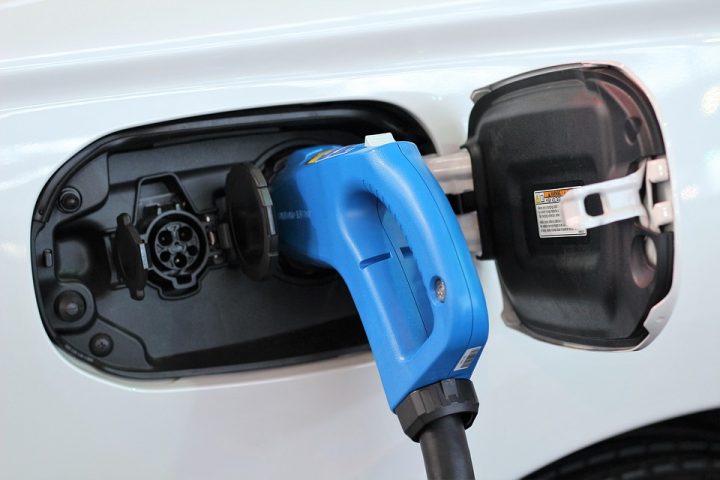
While there is increasing evidence of climate action, if no immediate and deep emissions reductions happen across all sectors, limiting global warming to 2.7 degrees Fahrenheit is beyond reach, according to scientists in the latest Intergovernmental Panel on Climate Change report released Monday.
The Intergovernmental Panel on Climate Change is the United Nations body for assessing the science related to climate change and prepares assessment reports about the state of knowledge of climate change, its impacts, future risks, and options for reducing the rate its taking place.
Supporter Spotlight
Though the 2010-2019 average annual global greenhouse gas emissions were at their highest levels in human history, there have been sustained decreases of up to 85% in the costs of solar and wind energy, and batteries since 2010. An increasing range of policies and laws have boosted energy efficiency, reduced rates of deforestation and accelerated the deployment of renewable energy, according to IPCC.
“We are at a crossroads. The decisions we make now can secure a livable future. We have the tools and know-how required to limit warming,” IPCC Chair Hoesung Lee said in a statement. “I am encouraged by climate action being taken in many countries. There are policies, regulations and market instruments that are proving effective. If these are scaled up and applied more widely and equitably, they can support deep emissions reductions and stimulate innovation.”
The IPCC is working on the Sixth Assessment Report that consists of three working group contributions and a synthesis report. The Working Group I contribution was finalized in August 2021 and the Working Group II contribution in February. The Summary for Policymakers of the IPCC Working Group III report, “Climate Change 2022: Mitigation of climate change” was approved Monday by 195 member governments of the IPCC.
In the scenarios assessed in the report, limiting warming to around 2.7 degrees Fahrenheit requires global greenhouse gas emissions to peak before 2025 at the latest, and be reduced by 43% by 2030. At the same time, methane will need to be reduced by about a third, according to IPCC. The global temperature will stabilize when carbon dioxide emissions reach net zero. For 2.7 degrees Fahrenheit, this means achieving net zero carbon dioxide emissions globally in the early 2050s. For 3.6 degrees Fahrenheit, it is in the early 2070s.
Scientists in the report say there are options in all sectors to at least cut emissions in half by 2030, including major transitions in the energy sector, which will involve a substantial reduction in fossil fuel use, widespread electrification, improved energy efficiency and use of alternative fuels such as hydrogen.
Supporter Spotlight
Cities and other urban areas can reduce emissions through lower energy consumption by creating compact, walkable cities, electrification of transport in combination with low-emission energy sources, and enhanced carbon uptake and storage using nature. There are options for established, rapidly growing and new cities, officials said.
Reducing emissions in industry will involve using materials more efficiently, reusing and recycling products and minimizing waste. For basic materials, including steel, building materials and chemicals, low- to zero-greenhouse gas production processes are at their pilot to near-commercial stage.
“This sector accounts for about a quarter of global emissions. Achieving net zero will be challenging and will require new production processes, low and zero emissions electricity, hydrogen, and, where necessary, carbon capture and storage,” officials said.
Agriculture, forestry and other land use can provide large-scale emissions reductions and also remove and store carbon dioxide at scale. However, land cannot compensate for delayed emissions reductions in other sectors.
“Accelerated and equitable climate action in mitigating and adapting to climate change impacts is critical to sustainable development,” officials said, adding that some response options can absorb and store carbon while also helping communities limit the impacts of climate change. For example, in cities, networks of parks and open spaces, wetlands and urban agriculture can reduce flood risk and reduce heat-island effects.
“Climate change is the result of more than a century of unsustainable energy and land use, lifestyles and patterns of consumption and production,” said Skea. “This report shows how taking action now can move us towards a fairer, more sustainable world.”
Dr. Alondra Nelson, head of the White House Office of Science and Technology Policy, said in a statement that IPCC’s latest findings highlight the urgency of deploying clean energy solutions and accelerating new technologies that can capture, store and remove carbon from the atmosphere.
“We know what we need to do, and we can meet our climate and clean energy goals if we act now,” Nelson said. “We are committed to cutting U.S. emissions in half by the end of the decade, reaching 100% clean electricity by 2035, and achieving net-zero emissions by 2050.
Nelson added that climate change is an equity issue, with the wealthiest households and nations disproportionately generating greenhouse gas emissions, and climate impacts disproportionately affecting those who have contributed least to the problem.
“Today’s report is another reminder that this decade must be the inflection point. This is the moment for bold climate leadership by governments, and for collective action to adopt new, affordable technologies at mass scale to meet this global crisis. The science is clear; now we must act,” she said.
“We are rapidly running out of time to avert the most catastrophic consequences of climate change,” said Daniel Bresette, executive director of the Environmental and Energy Study Institute (EESI), in response to the report released Monday. “But with an all-in approach that starts with the rapid deployment of available technologies, it is still possible to limit warming to 1.5°C.”
In this latest report, the IPCC emphasized emissions must be dramatically reduced within this decade and decline to net zero by 2050 to limit global warming to 1.5 degrees Celsius, Kathleen Rogers, president of EARTHDAY.ORG, noted in a statement.
“If we are to make the Paris Agreement mean anything at all then we must work together,” she said. “This means everyone from individuals, businesses, governments, and other parts of civil society have to commit to a transformative shift in the global economy as we know it.”







